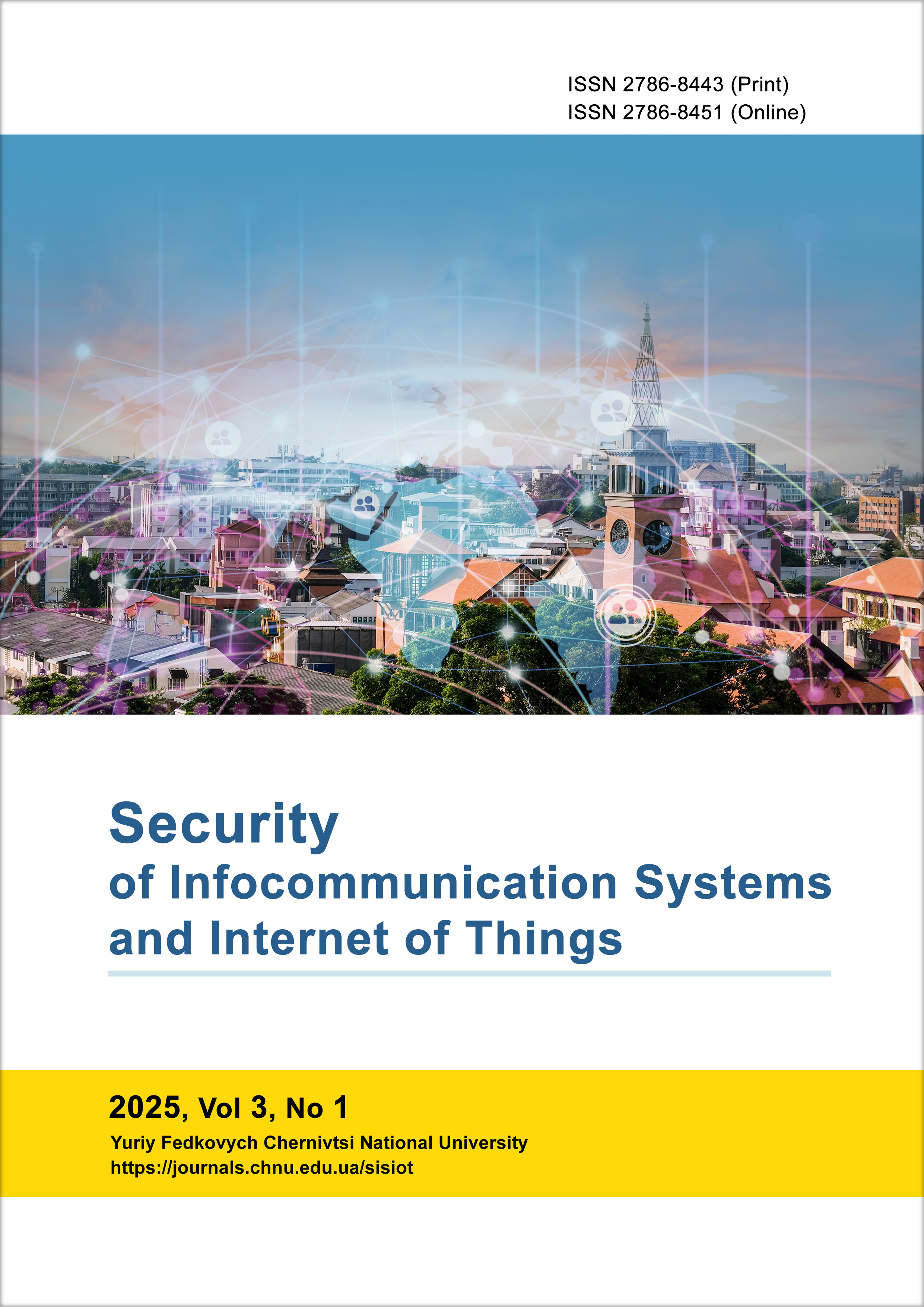Filtration Methods in Sonar Systems
DOI:
https://doi.org/10.31861/sisiot2025.1.01009Keywords:
hydroacoustic, wavelet transformation, Fourier transform, Wiener filterAbstract
The paper considers the main methods of hydroacoustic signal filtering used to extract useful information from natural and anthropogenic noise. The reliability and accuracy of sonar systems depend on the ability to suppress interference while preserving the useful components of the received acoustic signals. Particular attention is paid to wavelet smoothing, the Wiener filter, adaptive filtering algorithms based on the Least Mean Squares (LMS) method, and a variety of frequency-selective filters, including bandpass, low-pass, high-pass, and notch filters. The effectiveness of each method is discussed in the context of typical underwater acoustic environments, where noise sources vary in origin and spectral characteristics. As part of the study, a real hydroacoustic signal recorded using a broadband hydrophone in natural aquatic conditions was used to evaluate and compare the filtering techniques. The signal contained both low-frequency and high-frequency interference components, as well as impulsive noise typical of biological and anthropogenic sources. MATLAB R2024a software was used to simulate and visualize the filtering process, including wavelet decomposition and thresholding. Based on the results obtained, a combined approach to filtering is proposed, which integrates several complementary methods to enhance signal clarity. This hybrid strategy enables more accurate detection and identification of underwater objects by adapting to specific noise scenarios. The simulation results confirm that a multi-stage filtering scheme significantly improves the signal-to-noise ratio and preserves informative features of the hydroacoustic signal. The proposed approach is applicable to sonar systems used for marine research, underwater navigation, and environmental monitoring.
Downloads
References
V. I. Khimchenko, Akustyka ta optyka okeanu: konspekt lektsii. Odesa: ODEKU, 2013. [Online]. Available: http://eprints.library.odeku.edu.ua/id/eprint/668/1/KONSPEKT(akustika%20i%20optika).pdf
V. K. Madisetti, The Digital Signal Processing Handbook, 2nd ed. Boca Raton, FL: CRC Press, 2009.
N. Wiener, Extrapolation, Interpolation, and Smoothing of Stationary Time Series. Cambridge, MA: MIT Press, 1949.
A. V. Oppenheim and R. W. Schafer, Discrete-Time Signal Processing, 3rd ed. Upper Saddle River, NJ: Prentice Hall, 2009.
J. G. Proakis and D. G. Manolakis, Digital Signal Processing: Principles, Algorithms, and Applications, 4th ed. Pearson, 2006.
S. Haykin, Adaptive Filter Theory, 5th ed. Pearson, 2014.
L. L. Scharf, Statistical Signal Processing: Detection, Estimation, and Time Series Analysis. Reading, MA: Addison-Wesley, 1991.
A. H. Assi, Ed., Engineering Education and Research Using MATLAB. [Online]. Available: http://dx.doi.org/10.5772/1532
K. P. Soman, K. I. Ramachandran, and N. G. Resmi, Wavelets in Python, MATLAB, and Julia: Theory and Practice. [Online]. Available: https://books.google.com.ua/books?id=V7DgqDL_ZuAC&printsec=frontcover&hl=uk#v=onepage&q&f=false
I. Daubechies, Ten Lectures on Wavelets. [Online]. Available: https://jqichina.wordpress.com/wp-content/uploads/2012/02/ten-lectures-of-waveletsefbc88e5b08fe6b3a2e58d81e8aeb2efbc891.pdf
Published
Issue
Section
License
Copyright (c) 2025 Security of Infocommunication Systems and Internet of Things

This work is licensed under a Creative Commons Attribution 4.0 International License.









